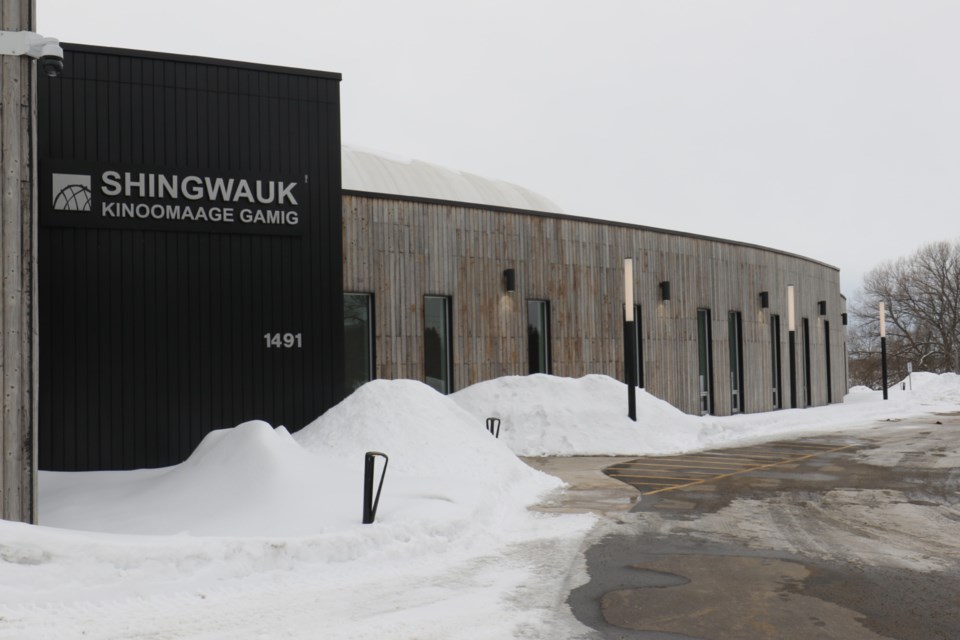Shingwauk Kinoomaage Gamig isn’t going to see a dime of the $1.3 billion from the province that’s being provided to Ontario’s struggling post-secondary sector in order to keep it afloat amid an ongoing tuition freeze and the recent federal crackdown on international students.
But the director of operations for the Indigenous post-secondary institution in Sault Ste. Marie says the decision by the province is nothing new, given the fact that Indigenous education institutes across Ontario have been historically underfunded when compared to their mainstream counterparts.
“Everybody is against Indigenous anything — we’re always getting the short end of the stick, or just not getting anything,” said Dianne Roach. “I know that we don’t receive the same funding as any other college or university. We’re in the process of working towards our accreditation, and usually, colleges and universities would get an influx of funding to do program development and design — we don’t get that, which is so unfair.”
Roach says that if the province’s funding mechanisms were actually equitable, Shingwauk Kinoomaage Gamig (SKG) would receive provincial funding not only for the design, development and delivery of its culturally relevant programs and services, but also for essential roles such as registrar and recruitment officer.
The school also has a pressing need to hire more professors and people who specialize in curriculum development in order to grow the entire academic department. But the funding, Roach says, is never there when it comes to Indigenous post-secondary institutions throughout the province.
“They don’t receive an injection of funding to help lift programs off the ground, and we know that Indigenous institutes serve our own population, because our people feel more welcome and safe within our own spaces,” Roach said. “We have students that are attending school at SKG — and at this point in time, they are students of Algoma University, but they just feel differently when they come into our space.
“We have elders that are present, we provide a hot lunch — all kinds of activities that really create a home-away-from-home type atmosphere that you wouldn’t get in any mainstream institution. We just want to be treated fairly, and it’s sad that this continues to happen. They give you a little bit, and you’re very thankful, but it’s almost like, is that all we’re going to get?”
Earlier this week, the Indigenous Institutes Consortium (IIC) — an organization representing the seven Indigenous-owned and operated education and training institutions across Ontario — issued a news release calling on the Ontario government to stop ignoring the needs of historically underfunded Indigenous schools.
“The Indigenous institutes are very disappointed in the government’s announcement,” said IIC Executive Director Marsha Josephs. “What this does is Indigenous learners will not have equal access to Indigenous-led post-secondary education in this province, and it puts Indigenous institutes at risk of closing programs, and possibly closing institutes.
“I would say once again we see that the government is prioritizing funding of mainstream institutions instead of providing equitable access to Indigenous-led education. It is just simply unfair, and we cannot continue to see this inequity.”
Both Josephs and the IIC say that Indigenous post-secondary institutions maintain a successful graduation rate of anywhere from 75 to 85 per cent — which is up to 10 per cent higher than Ontario colleges — with more than 90 per cent of graduates transitioning to good quality employment afterwards. Despite all of this, Josephs says, Indigenous post-secondary schools remain severely underfunded, with staff often taking multiple roles in order to make things work.
“They are exhausted, and really, we’re at a crippling state of continuing to offer these essential programs and services that Indigenous learners in our communities expect,” said Josephs. “We have been pleading with the government to understand the amazing outcomes that we’ve been able to achieve on a shoestring budget — we are efficient, we are effective. We have graduation rates that are, in fact, higher than that of our colleges.”
Meanwhile, Shingwauk Kinoomaage Gamig is forging ahead, anticipating that the school will become an accredited, standalone university sometime next year. Roach says the institution will continue to deliver programming and services that are culturally relevant and engaging that speak to Indigenous history, stories and traditions — but it requires equitable funding that’s on par with mainstream colleges and universities in order to fully realize its potential.
“We have this big vision that requires the financial resources to make it become a reality,” said Roach. “So at this point, it’s a vision and we’ll continue working towards that goal — but we do need to have the same opportunities as any other mainstream institution.”
The office of Ontario Colleges and Universities Minister Jill Dunlop did not respond to a request for comment made by SooToday Thursday.





